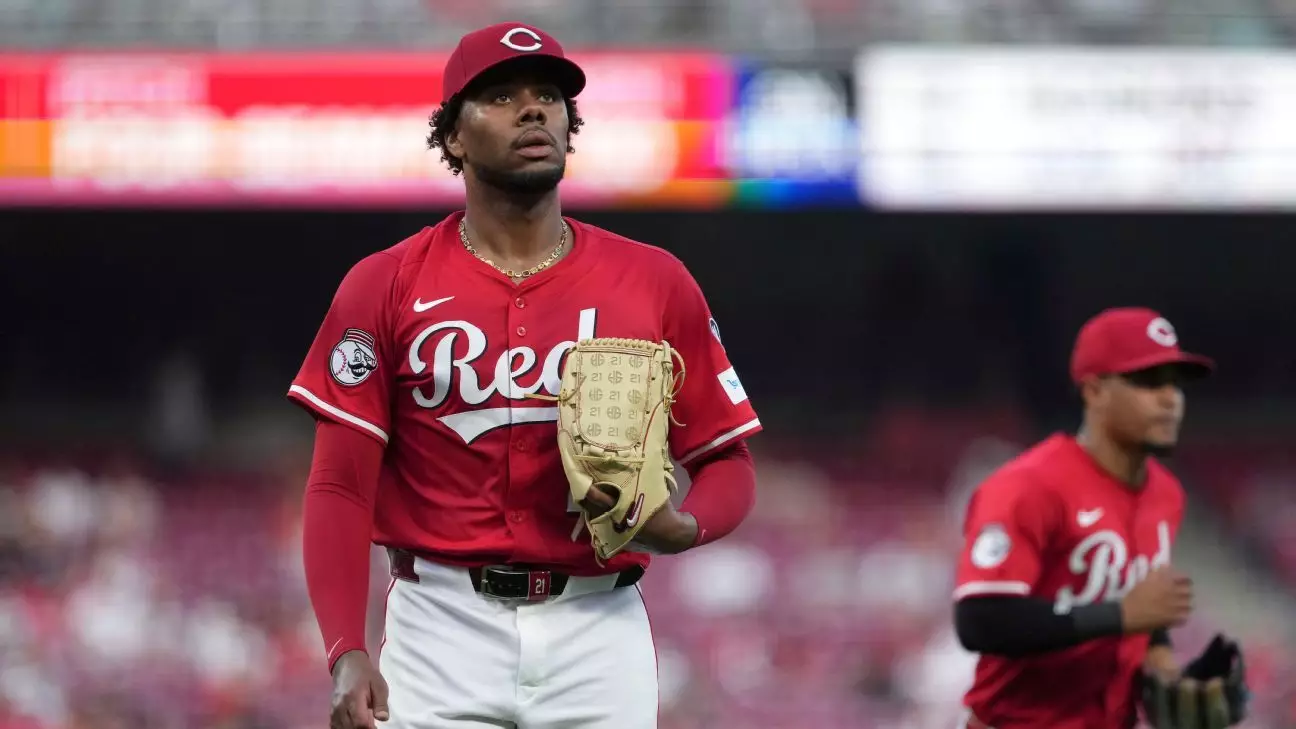In the unpredictable world of professional baseball, injuries are an inevitable reality that can alter the dynamics of even the most promising teams. This was starkly illustrated when the Cincinnati Reds announced the placement of their ace pitcher, Hunter Greene, on the 15-day injured list due to a right groin strain. Greene had recently returned from a prior injury stint and was enjoying a commendable season with a remarkable 2.72 ERA in eleven starts. Yet, the recurrence of injury during a recent match against the Milwaukee Brewers highlighted the fragile nature of athletic performance. Despite the initial optimism surrounding Greene’s comeback, the reality of another setback begs the question: How can a team maintain its competitive edge when its star player is sidelined?
The Veteran Acquisition
In the wake of Greene’s injury, the Reds have strategically enlisted the experience of veteran pitcher Wade Miley, a significant addition that underscores the necessity of seasoned talent in a young roster. Miley, who previously played an essential role for the Reds in the 2020-2021 seasons, brings invaluable experience to a rotation now leaning heavily on youth. His arrival is not just about filling a gap; it is also a testament to the team’s foresight in recognizing the value of mentorship amid adversity. At 38, Miley’s journey through multiple teams and the challenges he’s faced, including Tommy John surgery, allow him to provide a stabilizing presence that could be pivotal for Cincinnati’s younger pitchers.
Miley’s Impact
Manager Terry Francona’s excitement over Miley’s return reflects a broader understanding of the psychological benefits that a veteran can offer to a team facing uncertainty. Francona noted the importance of Miley’s presence, emphasizing that “his ability to compete” is unmatched by younger players who might still be finding their footing in the league. This dynamic is crucial; younger pitchers often require guidance on how to navigate high-pressure situations, especially when the stakes are raised. Miley’s experience, not only in pitching but in handling the mental challenges of the game, can offer a blueprint for success to his teammates.
With Miley’s impressive track record, including memorable moments such as throwing a no-hitter, fans and players alike are reminded of the resilience that characterizes the sport. The confidence displayed by Miley in his readiness and eagerness to contribute speaks volumes of his character and commitment to the team. The Reds will not only benefit from his on-field skills but also from the culture of accountability and professionalism that he embodies.
Coping with Injuries in a Competitive Landscape
Injuries, though disruptive, allow organizations to evaluate their depth and adaptability in real-time. For the Reds, Greene’s absence necessitates a re-evaluation of their rotation, pushing other pitchers to rise to the occasion. The real test lies in how effectively the team can pivot from setbacks and utilize the resources at their disposal. While the organizational strategy remains apparent through the signing of Miley, the implicit challenge is for the remaining pitchers to step up—something that Miley himself understands well, having faced similar circumstances throughout his career.
Adaptability in sports is not merely about recovering from injuries; it’s about fostering a culture where challenges are perceived as opportunities for growth. The Reds must leverage this moment, utilizing the experienced insight that Miley provides while coaxing the best out of their younger players. This blending of youthful enthusiasm and seasoned experience is vital; it can transform a moment of despair into a turning point for triumph.
As baseball continues, every player must assess their physical readiness and mental resilience. For the Reds, the road ahead may be fraught with challenges, but with a formidable pitcher like Miley ready to lead by example, their prospects for overcoming obstacles seem brighter.


Leave a Reply